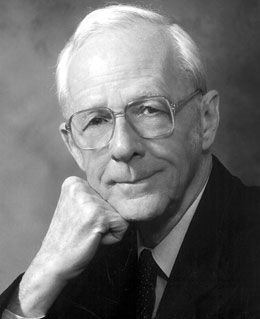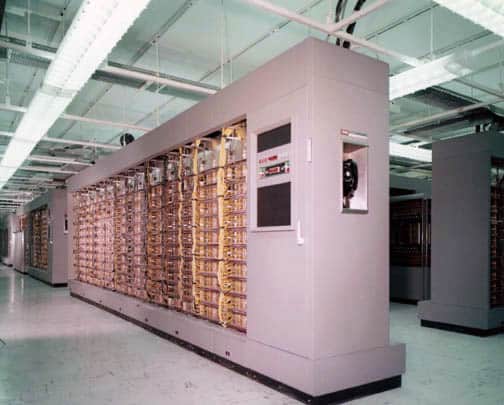5 Facts about SAGE Computer System
- The full form of SAGE is a Semi-Automatic Ground-Environment computer.
- The weight of SAGE Computer System was more than 250 tons in total.
- During the 1950s, SAGE was the world’s largest computer project, ushering IBM into the new computing world.
- Between 1952 and 1955, computers accounted for 80% of IBM’s income, and by 1958, more than 7000 IBM employees were working on the project.
- The SAGE (Semi-Automatic Ground Environment) system was one of the first real-time computers. It was massive – deep underground tunnels, huge computers monitored every movement in the sky and defended the United States from a surprise nuclear assault.
SAGE Computer System History
Jay Forrester (designer of the Whirlwind computer) and George Valley, two academics at MIT’s Lincoln Lab, came up with the idea for SAGE Computer System. Jay Forrester prepared a lengthy article in 1948 outlining his proposal for improving America’s air defense utilizing advances learned during World War II radar research.
The idea was initially tested on his Whirlwind computer, hooked up to a long-range and numerous short-range radars on Cape Cod. The introduction of magnetic core memory, which considerably enhanced the machine’s dependability, running speed (x2), and input speed (x4) over the Whirlwind’s original Williams tube memory, was a significant accomplishment.
Quick Facts
- Created
- 1950s
- Creator
- Jay Forrester and George Valley
- Original Use
- Jay Forrester created the SAGE system to detect Soviet aircraft carrying nuclear weapons and direct American missiles to intercept and destroy them.
- Cost
- NA

Following the successful completion and operation of the sophisticated Whirlwind computer, work on a more extensive and faster machine (dubbed Whirlwind II) began. However, the design quickly went beyond MIT’s capabilities. The Whirlwind II concept was shelved without being built to focus MIT’s resources on the Whirlwind I. IBM, the main contractor, designed the SAGE computer based on the stillborn Whirlwind II design rather than the original Whirlwind.
SAGE Computer System: How It Worked
SAGE was made up of 23 direction centers (concrete-hardened bunkers scattered across the United States and one in Canada), each equipped with a SAGE computer capable of tracking up to 400 planes. Jay Forrester created the SAGE system to detect Soviet aircraft carrying nuclear weapons and direct American missiles to intercept and destroy them.
The SAGE weighed more than 250 tons in total. This machine has 60000 vacuum tubes, 1750000 diodes, and 13000 transistors. The whole system space was around 2000 square meters, with the CPU taking up 15 x 45 meters and the consoles taking up 8 x 15 meters.
The architecture of the SAGE included a duplex CPU, one of which would be running; no interrupts, 4 index registers, and a real-time clock. The word length it supported was 32 bits. The performance of a single address was 75KIPS, and lastly, the power consumption was about 3 Megawatts, and it also required specialized generators and cooling systems.
SAGE featured around 150 display consoles, each having a 48-inch Vector CRT and a light gun pointing mechanism, as well as a “Typotron” display tube capable of showing over 25K characters per second.
SAGE combines data from several radar stations and processes it to provide a uniform view of the airspace across a large region. Data from many radar stations were combined and processed to give a coherent picture of the airspace across a large area.
At Sector Direction Centers, the U.S installed SAGE systems. In watching, charting, sending information, and designating targets for air defense weapons, the SAGE automatic data-processing capabilities replaced human GCI systems. Additionally, air surveillance data was processed at SAGE facilities and provided to Air Defense Command units.
The environment allowed radar station workers to monitor radar data and system status (e.g., Arctic Tower radome pressure) and process height requests from Direction Center (D.C.) staff using range height equipment. D.C. personnel monitored the radar tracks, and IFF data provided by the stations requested height-finder radar data on targets. They also observed the computer’s evaluation of which fighter aircraft or Bomarc missile site could reach the threat first after receiving Long Range Radar Input from the sector’s radar stations.
The “NORAD sector commander’s operational staff” in the Weapons Direction room could designate a fighter intercept of a target. They could also launch a Bomarc intercept with automatic Q-7 guidance of the surface-to-air missile to a final homing dive (equipped fighters were eventually guided to intercepts automatically).
SAGE Computer System: Historical Significance
During the 1950s, SAGE was the world’s largest computer project, ushering IBM into the new computing world. Between 1952 and 1955, computers accounted for 80% of IBM’s income, and by 1958, more than 7000 IBM employees were working on the project.

During the 1950s, SAGE was the world’s largest computer project, ushering IBM into the new computing world.
©Nick N A/Shutterstock.com
SAGE was the most ambitious computer project ever because it required over 800 programmers and the technical resources of some of the country’s biggest companies. This included IBM (hardware), Burroughs (inter-Center communications), MIT’s Lincoln Laboratories (system integration), Western Electric (building design and construction), and SDC (part of the RAND Corporation) for software.
The project’s entire cost is anticipated to be between $8 and $12 billion. The old “Clyde” systems were replaced by modern high-speed digital computers in 1979, and the SAGE control centers were replaced by Regional Operations Control Centers (ROCC). As a result, the SAGE system continued operation for over 20 years, until 1983.
Memory:
•Magnetic core (4 x 64K word)
•Magnetic Drum (150K word)
•4 IBM Model 728 Magnetic Tape Drives (~100K words each)
Note: Memory Cycle Time: 6 microseconds, all systems with parity checking
I/O devices:
•CRT display
•keyboard
•light gun
•punched card reader (IBM 713)
•card punch (IBM 723)
•line printer (IBM 718)
•realtime serial data (teletype, 1300 bps modem, voice line)
SAGE had more than 150 display consoles housing a 48 inch long Vector CRT, each equipped with a light gun pointing device, as well as a “Typotron” display tube, capable of displaying more than 25K characters per second.
Up Next…
- Atlas Computer Explained – Everything You Need To Know Learn about an early precursor of supercomputer–the Atlas computer.
- The History of Colossus Computer The Colossus computer helped decipher secret messages to aid the British and Americans during WWII. Read the full story here.
- What is Steam Deck? Are you wondering what Steam Deck is, exactly? We’ll answer all your questions in this informative article.
The image featured at the top of this post is ©United States Air Force, Public domain, via Wikimedia Commons.


